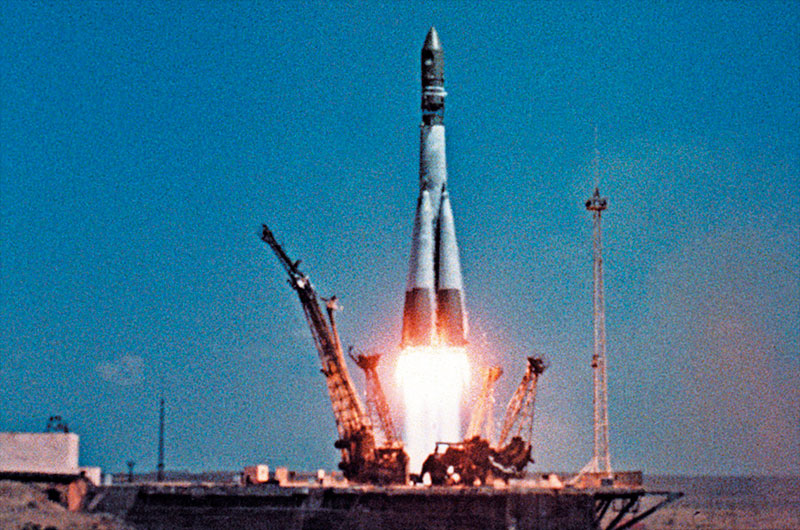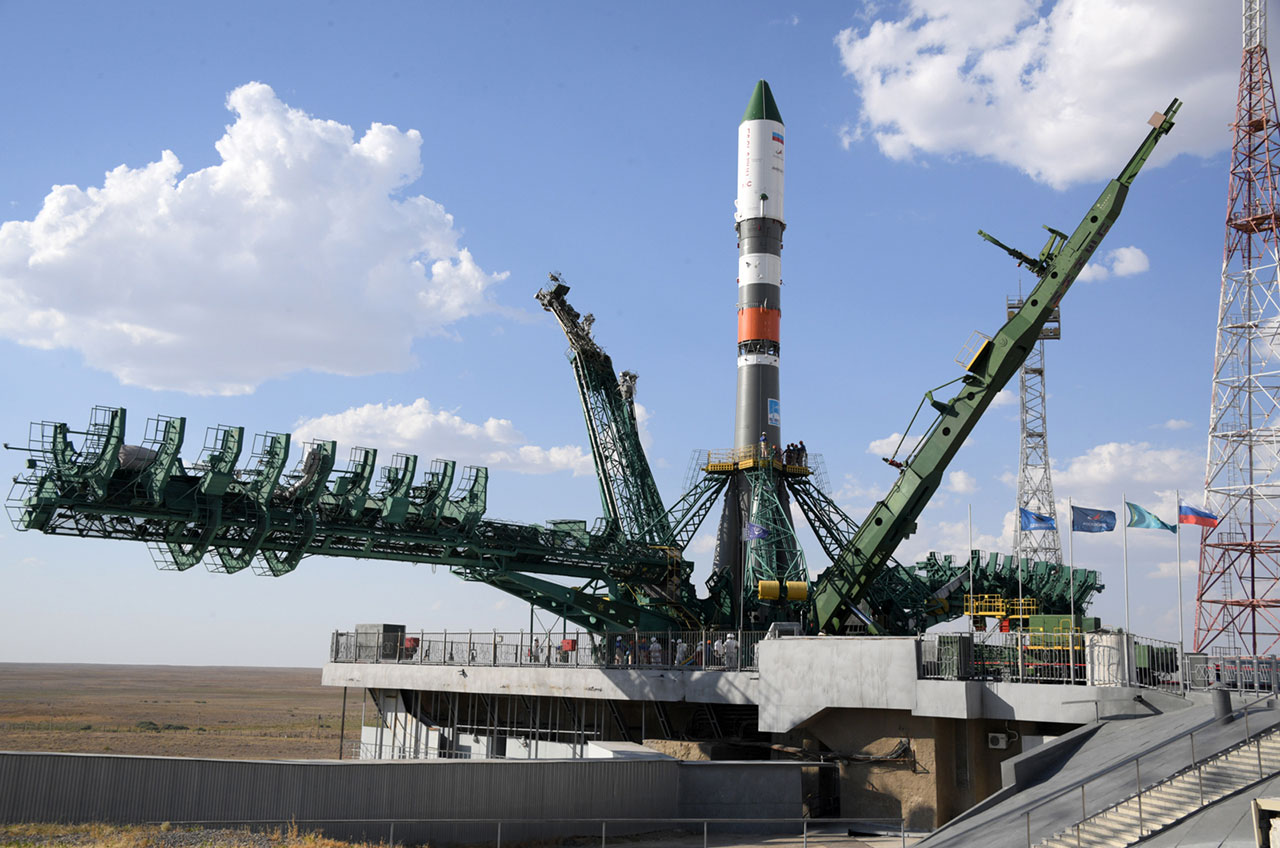Russia's Soyuz 2 sports new look inspired by first cosmonaut Yuri Gagarin's rocket

For the first time in years, Russia's Soyuz-2 launch vehicle will lift off with a new look, inspired by the rocket that put the first human into space.
GK Launch Services, the commercial launch division of Glavkosmos, a subsidiary of Russia's Roscosmos state space corporation, announced the new livery, which will debut with the Soyuz-2.1a booster set to fly with 38 satellites from 18 countries on Saturday (March 20).
"It's the first time in decades that Soyuz-2 will feature the blue-white pattern instead of the standard gray-orange combination of color," GK Launch Services wrote on Twitter. "This color pattern was inspired by the Vostok LV [launch vehicle] prototype that sent Yuri Gagarin into space from Baikonur 60 years ago."
Related: Yuri Gagarin, first man in space (photo gallery)

First introduced in 2004 by the Progress Rocket Space Center, the Soyuz 2 is the modern version of the Russian rocket used to launch crewed spacecraft and cargo vehicles to the International Space Station, as well as commercial and military satellites into Earth orbit. It is often paired with the Fregat-M upper stage, as it is for the upcoming rideshare mission.
Traditionally, the Soyuz 2a.1 has launched with a greenish gray appearance with white and orange highlights. Like the all-gray Vostok rocket that lifted off with cosmonaut Yuri Gagarin on April 12, 1961, on the world's first crewed spaceflight, the Soyuz 2 has appeared white at liftoff due to frost forming on the vehicle's skin (the result of the rocket's cryogenic liquid oxygen).
The new Soyuz 2 paint pattern mimics the Vostok launch appearance with a body painted all white with light and dark blue highlights.
Get the Space.com Newsletter
Breaking space news, the latest updates on rocket launches, skywatching events and more!

The "corporate bright blue color is inherent in [the GK Launch Services] main logo, as well as used in the corporate identity of the State Corporation," Roscosmos said in a statement posted on its website. "The fairing covering the spacecraft will retain the 'standard' white color. Otherwise, the orange [paint] on the [rocket's body] will be replaced by blue, and the gray will be replaced with white. The color of the transition compartment will also change — instead of the traditional gray, it will also [be painted] blue."
The Soyuz-2a.1 launch on March 20 will fly from Site 31/6 at Russia's Baikonur Cosmodrome in Kazakhstan, near Site 1 where Gagarin lifted off aboard Vostok 60 years ago. Also referred to as "Gagarin's Start," Site 1 is currently undergoing upgrades to support the Soyuz 2 class of rockets.
The rocket will lift off with the CAS500-1 Earth observation satellite for the Korea Aerospace Research Institute (KARI), as well as smaller payloads for Russia, Japan, Saudi Arabia, the United Arab Emirates, Italy, the Netherlands, Germany, Canada, the United Kingdom, Thailand, Spain, Slovakia, Argentina, Israel, Brazil, Hungary and Tunisia.
The Vostok-inspired livery is expected to be used for other Soyuz 2 rockets flown under contract with GK Launch Services this year, according to Roscosmos.
Click through to collectSPACE to see more photos and the mission patch for the Vostok-inspired Soyuz 2a.1 rocket.
Follow collectSPACE.com on Facebook and on Twitter at @collectSPACE. Copyright 2021 collectSPACE.com. All rights reserved.
Join our Space Forums to keep talking space on the latest missions, night sky and more! And if you have a news tip, correction or comment, let us know at: community@space.com.

Robert Pearlman is a space historian, journalist and the founder and editor of collectSPACE.com, a daily news publication and community devoted to space history with a particular focus on how and where space exploration intersects with pop culture. Pearlman is also a contributing writer for Space.com and co-author of "Space Stations: The Art, Science, and Reality of Working in Space” published by Smithsonian Books in 2018.In 2009, he was inducted into the U.S. Space Camp Hall of Fame in Huntsville, Alabama. In 2021, he was honored by the American Astronautical Society with the Ordway Award for Sustained Excellence in Spaceflight History. In 2023, the National Space Club Florida Committee recognized Pearlman with the Kolcum News and Communications Award for excellence in telling the space story along the Space Coast and throughout the world.










